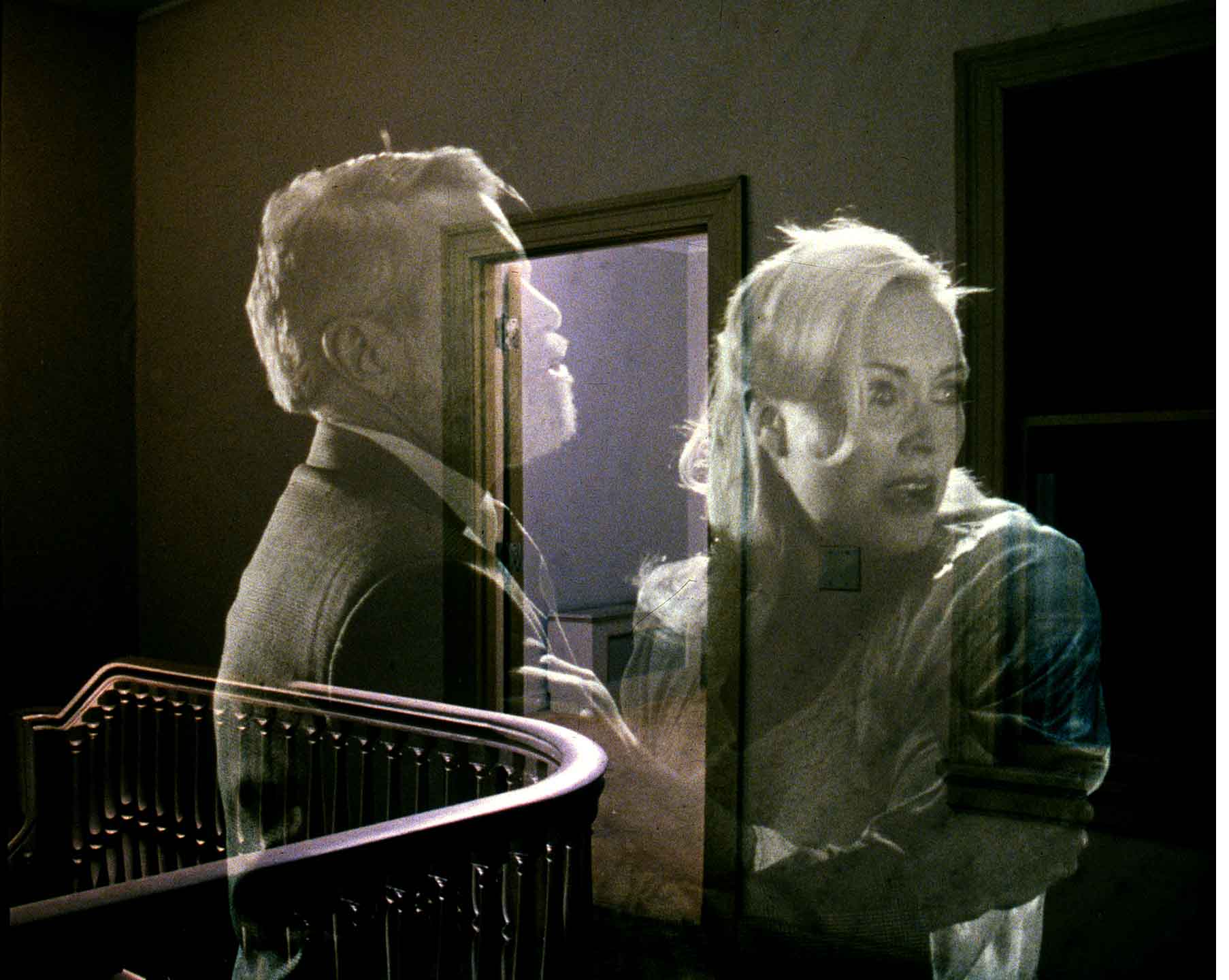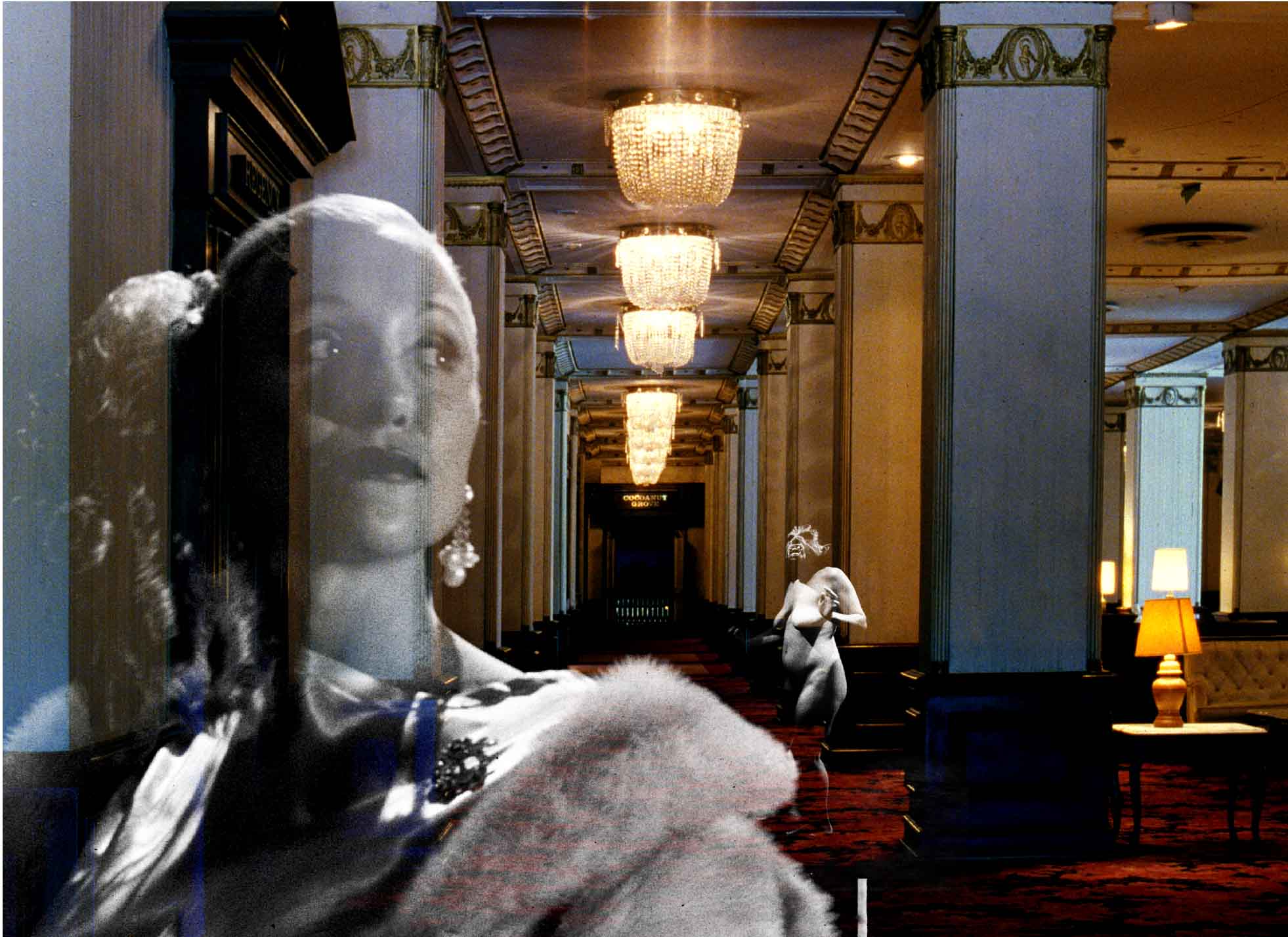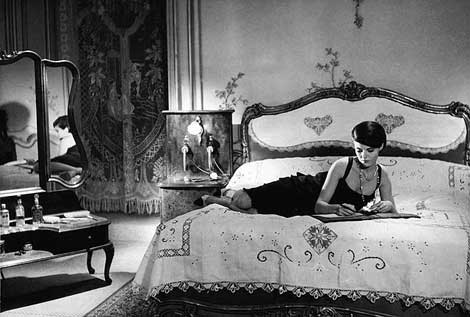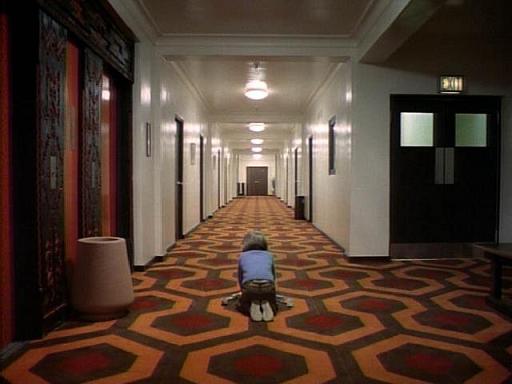From the Chicago Reader (May 30, 2003). — J.R.
The Decay of Fiction
*** (A must-see)
Directed by Pat O’Neill.
Truly original art tends to defy generic categories, and Pat O’Neill’s 35-millimeter, 73-minute The Decay of Fiction (2002), which Chicago Filmmakers is presenting this Saturday night at Northwestern University’s Block Cinema, is no exception. Inarguably an experimental work, it also reeks of classic Hollywood. The credits list O’Neill as producer, director, and editor and George Lockwood as cinematographer and sound designer, but no one is credited as the screenwriter — even though the film contains as much dialogue as any commercial feature, most of it apparently original. Forty-five cast members are cited alphabetically in those same credits, with no indication of who plays the most significant roles. Eight years in the making, the film partakes equally of the past (roughly the 1920s through the 1960s) and a disquieting version of the present.
It was filmed in and around LA’s Ambassador Hotel, which closed in 1989 and was slated for demolition at the time the film went into production in 1994 (although it was still standing when the film premiered last fall). The Decay of Fiction is both a color documentary about that crumbling edifice (where the first Academy Awards ceremony was held in 1929, and where Robert F. Kennedy was shot in 1968) and a sonata of ghostly memories that permeate its various spaces — the latter taking the form of sound and imagery associated with black-and-white Hollywood movies.
As far as I can make out from the sketchy information available in the press book, most of the images, dialogue, and sound effects are masterful pastiches of snatches from typical Hollywood features (especially noirs and melodramas) while most of the music was lifted from old sound tracks. Most of the black-and-white characters and props seen among the hotel’s ruins are transparent, and the majority of the sounds, including the dialogue and music, are pitched at the periphery of normal perception, so that even when they connote dramatic or violent action, they seem to be on the verge of evaporating.
A treasure chest of narrative fragments, The Decay of Fiction lacks the itinerary and “instructions for use” that automatically comes with a linear story. The shards of its many implied plotlines are the fruit of O’Neill’s all-encompassing sense of form, which for better or worse is conceptual rather than technical or material. His overall concept is cogently expressed in the synopsis he provides in the film’s press materials, so I’ve decided to quote it in full (though it should be kept in mind that O’Neill’s description of the film is necessarily interpretive rather than objective).
“The Decay of Fiction is an intersection of fact and hallucination in an abandoned luxury hotel. The hotel is in Hollywood. The walls of the Ambassador are cracked and peeling, the lawns are brown, and mushrooms grow in the damp carpets of the Coconut Grove. The pool is empty, and the ballroom where Bobby Kennedy died is shuttered and locked. A tall, elegant blonde stands transparently on the terrace of her bungalow, smoking and watching the sunrise. Voices and tinkles waft across the lawn. A contingent of various sinister men arrive and ask for Jack. Jack is expecting trouble, but not this kind of trouble. Louise, a guest, replays a nightmare in which she drowns Pauline so that she can marry Dean. The sun sets and rises again. Two detectives seem to turn up everywhere, searching for Communist literature and telling one another pointless stories of underworld intrigue. In the kitchens and behind the scenes the daily routine continues, individuality melts, and workers fuse with their jobs. Winter passes, and then another summer, and finally it is Halloween, and there is a costume ball which claims the life of Rhonda the evasive soprano. And then the building comes down in a clatter of Spanish tile and concrete, and fact has finally become fiction once again.” [The hotel’s demolition is suggested with sound effects rather than seen over the final credits.]
“I scribbled the words ‘The Decay of Fiction’ on the back of a notebook almost 40 years ago, tore it off and framed it 15 years later, and have wanted ever since to make a film to fit its ready-made description. To me it refers to the common condition of stories partly remembered, films partly seen, texts at the margins of memory, disappearing like a book left outside on the ground to decompose back into the earth.
“The film takes place in a building about to be destroyed, whose walls contain (by dint of association) a huge burden of memory: cultural and personal, conscious and unconscious. To make the film was to trap a few of its characters and some of their dialogue, casting them together within the confines of the site. The structure and its stories are decaying together, and each seems to be a metaphor for the other.
“I am interested in exploring the boundaries of believability. The narrative tradition insists that, no matter how fantastic the story, its surface must be seamless. By contrast, I call attention to the artifice, all the staged aspects, and allow the well-worn stories to slip over and through one another. The film’s intention could be described as wanting to take stories off the screen and into the imagination. I like to work within the gaps between reality and story, to look at what is going on around the story, its context, and to make that a part of my conversation with the audience.”
An expert technician, O’Neill has worked on the special effects of such Hollywood features as Star Wars: Return of the Jedi (1983), Superman IV (1987), and The Game (1997), so his ambivalent relationship to the film industry — and to industrialization in general — is more than just theoretical. His best-known previous feature, Water and Power (1989), used time-lapse photography and optical printing (both techniques also central to The Decay of Fiction) to analyze the way water consumption in Los Angeles has despoiled the surrounding countryside. The evanescence of human presence in relation to physical landmarks is no less a major theme of both films. As Fred Camper wrote of Water and Power in these pages, “Using time lapse to make weather changes visible, O’Neill renders people as fleeting shadows whose power to alter the landscape fails to mitigate the fragility and shortness of human life on a geologic scale.”
The film’s images of the past and the present are formally distinct from one another: most of the former are transparent, steady, and in black and white; most of the latter are solid, jerky time-lapse sequences in color. But there’s little else that’s constant or predictable about O’Neill’s high-end improvisations. The Decay of Fiction ultimately resembles a literary work insofar as its conceptual basis is so fully grounded in metaphor, as O’Neill himself notes. In this respect, it doesn’t quite live up to the high standards of either of the two films it evokes most often, Last Year at Marienbad (1961) and The Shining (1980), both of which are also set in spacious luxury hotels inhabited by ghostly memories and hallucinatory visions. (Though it hasn’t frequently been acknowledged by critics, Stanley Kubrick’s horror film is deeply indebted to Alain Robbe-Grillet and Alain Resnais’ experimental art feature. The Decay of Fiction seems equally influenced by Last Year at Marienbad‘s nostalgic and creepy poetry and its expert counterfeiting of various forms of Hollywood glamour and intrigue.) Maybe it’s the absence of narrative that makes the sum of O’Neill’s film less brilliant than its parts — despite the meditative possibilities that its nonlinearity offers. But if it’s a work that ultimately fails, it fails on a much higher level than that upon which many lesser works succeed. It seeps into one’s bones with a chilling conviction and leaves behind a poignant aftertaste.









